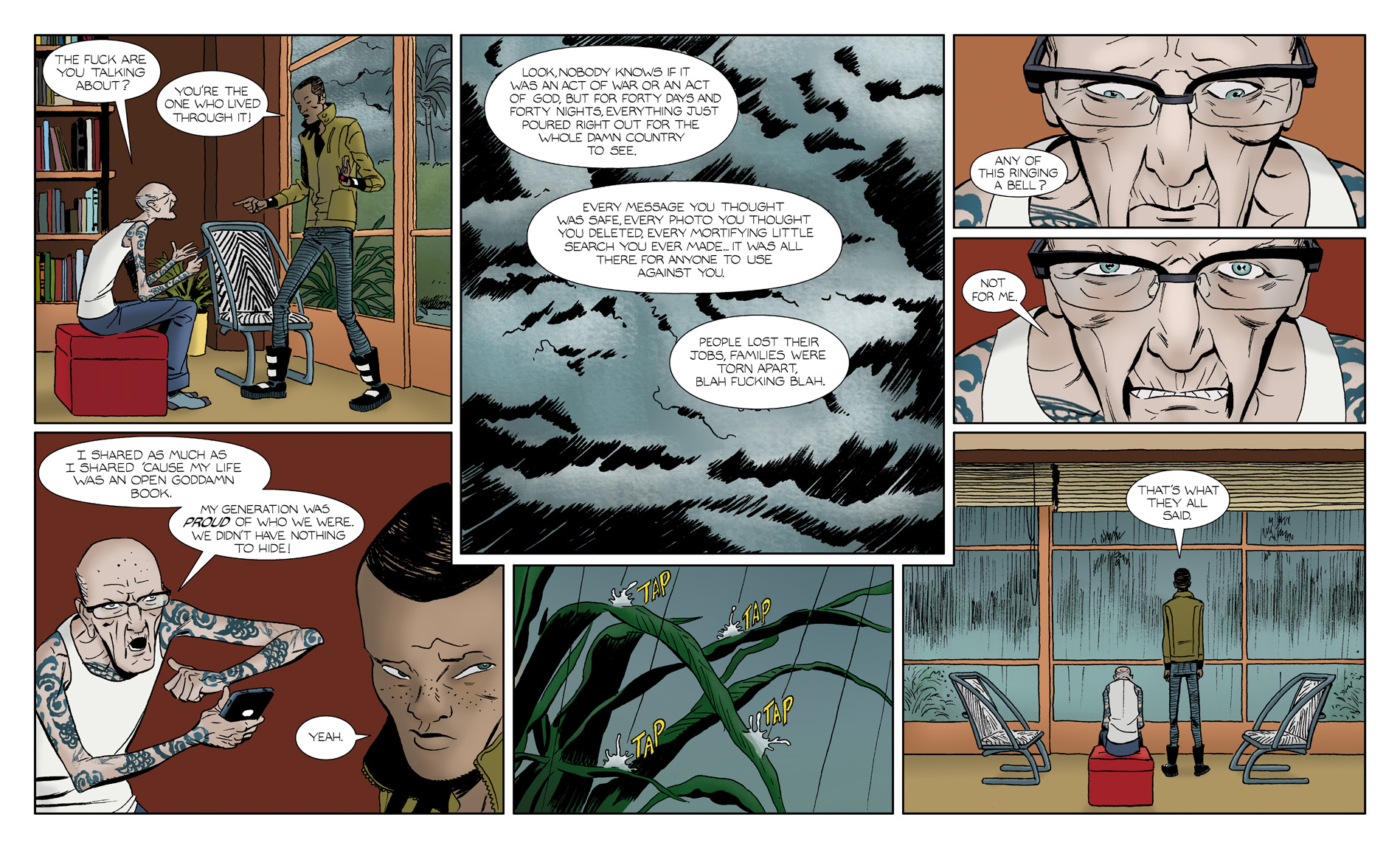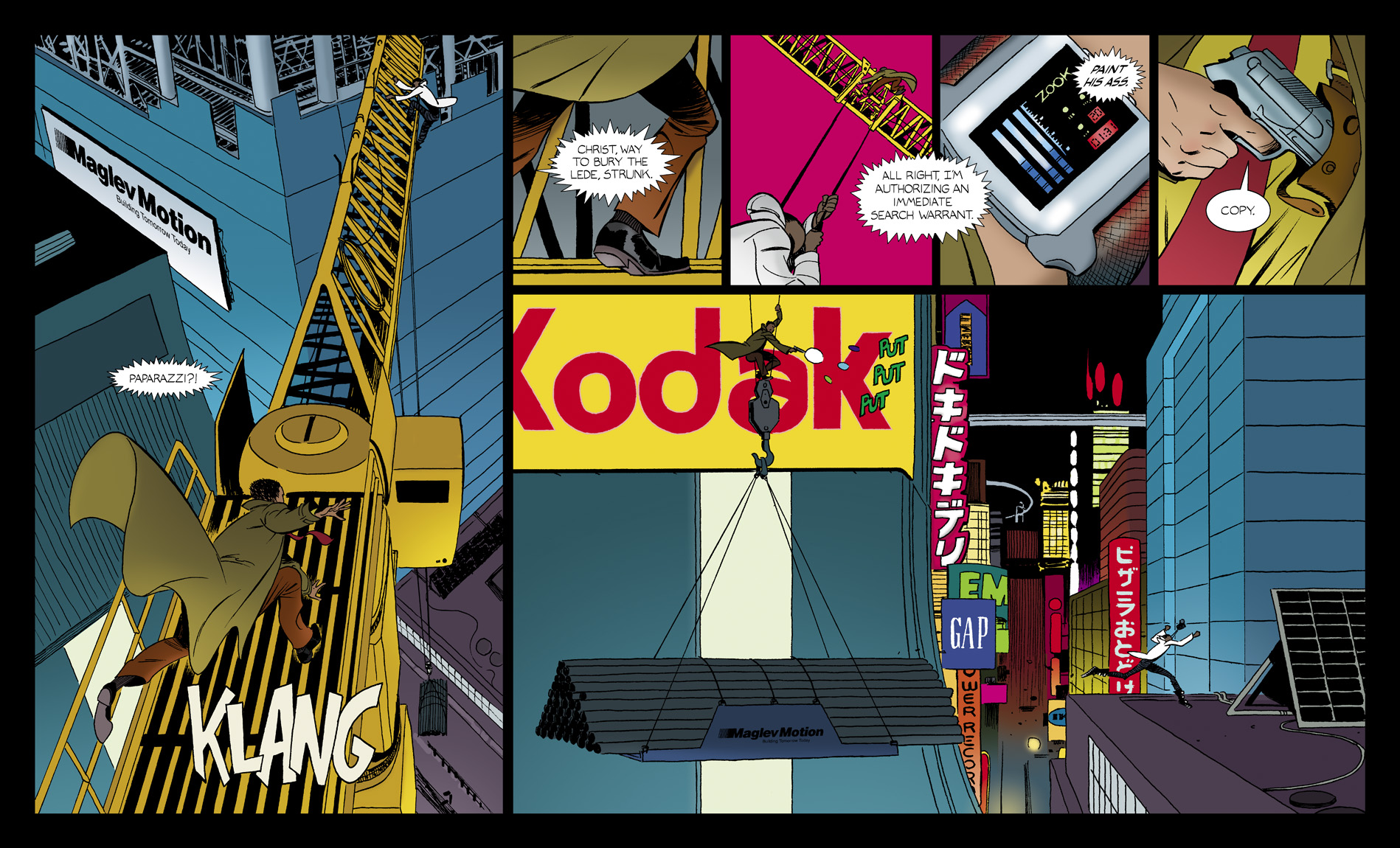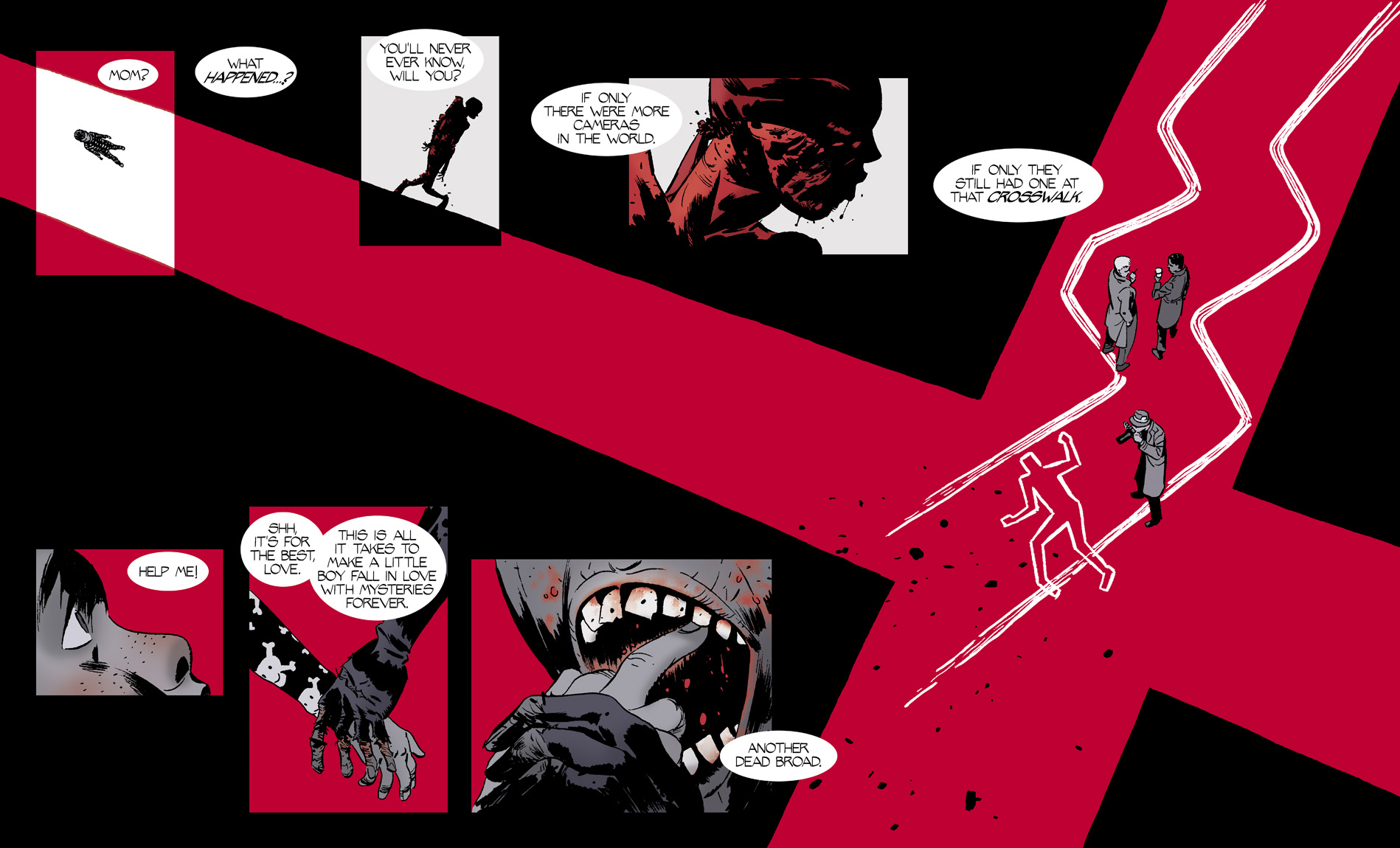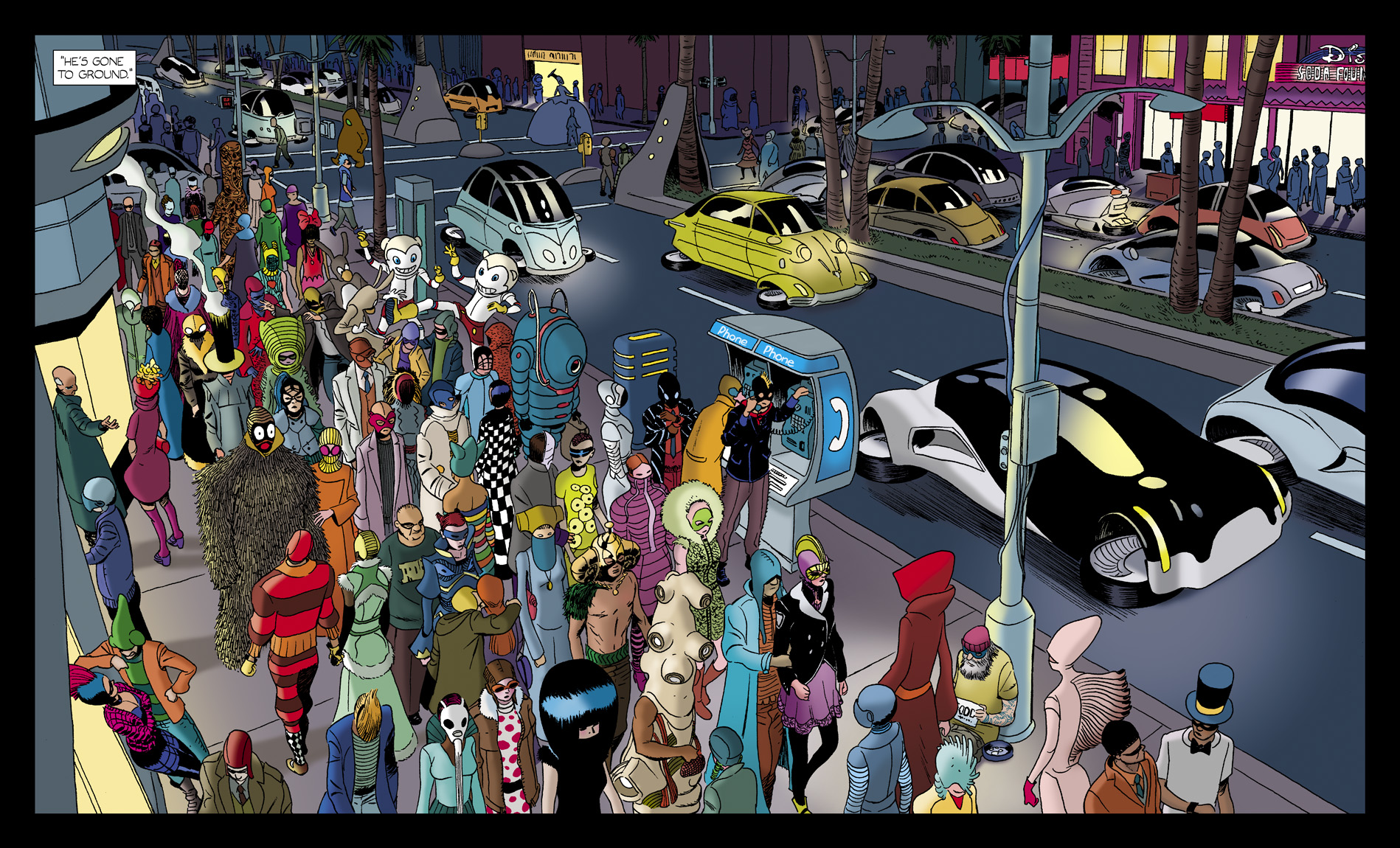It’s been a year since the first issue of The Private Eye, the science fiction maxiseries from Brian K. Vaughan and Marcos Martin, was released. Only available digitally through their site Panel Syndicate in a DRM-free, pay what you want format, you couldn’t ask for a better deal in the comics world. Two creators at the height of their powers experimenting in digital comics and you can name your price? This embarrassment of riches is made even better by the fact that the book is actually insanely good. The first five issues, along with some of the behind the scenes material from a special “making of” installment, have been collected in the title’s first ever “trade,” bucking the usual trend of collecting a digital comic into print form once sufficient strips have accumulated. Having the one digital file collecting this half of the story made for one of the smoothest reading experiences I’ve had in some time.
The pitch for The Private Eye is suitably within Vaughan’s wheel house, a high concept science fiction noir set in 2076, years after a catastrophic event referred to as “The Flood”. One day, all of society’s secrets rained down from the data cloud, irreparably shattering previously held notions of privacy and security. This resulted in the world this story takes place in, where it’s illegal to take a picture of someone without their permission, where library records are protected like government secrets, and citizens wear masks, use pseudonyms and experiment with the elasticity of identity in real life the way they currently do on the internet. Our protagonist, “Patrick Immelman” aka P.I., is a paparazzi, our narrative’s equivalent of a private investigator. He’s hired to investigate the past of a shady femme fatale, at her own behest. When she turns up dead the next day, we’re off to the races, with P.I. being caught in a web of mystery and suspense, with the deceased sister along for the ride.
The basic mechanics of the plot are rudimentary if you have ever read, seen or consumed a private eye story, but it’s the deft way the tropes and cliches are adapted to this near future setting that propel it from being random pulp pastiche to truly timely speculative fiction. The usual bumbling cops of noir storytelling are replaced by licensed journalists. The detective’s grizzled father figure is a tribal tat covered relic of millennial culture, absentmindedly cursing and lamenting a dearth of wi-fi. The plucky gal Friday is a minor driven by love of adventure trapped in a society that keeps all the fun for the adults. This volume’s final big reveal calls to mind the MacGuffin from Chinatown, but recontextualized into something vital and stirring, given the story’s post-Snowden preoccupations.
There’s some particularly impressive world building at play in every frame of this comic. Vaughan has finally found a story that is best served by his capacity for efficient characterization, pop culture laden dialogue, and propensity for nakedly references his influences. P.I.’s office has books and posters strewn about that seem a little on the nose (The Maltese Falcon, Freakonomics) but passively reenforce things about who he is without bashing us over the head with explanations of pointless narration. Rarely are we outright told anything about this world, but matter of fact dialogue is delivered with strong context clues alluding to a reality existing outside of the panel borders, like the way crime scene banter between the police and the journalists sounds like a newsroom rather than typical cop jargon or the way a librarian has to defend the sanctity of his job as if he were a therapist refusing to break doctor/patient confidentiality. This is immersive, lo-fi science fiction that is easy to pick up on and engrossing to soak in.
So much of that heavy lifting is done by Marcos Martin’s art, along with Muntsa Vicente’s vibrant color work. Together on Doctor Strange: The Oath, Vaughan and Martin collaborated to find a sweet spot between the technicolor world of the Marvel Universe with the gritty reality of New York City. Here, they do the opposite, bringing a bright and eclectic sense of artifice to their very real future Los Angeles. There are no superpowers or insane technology, but the whole world feels like a message board full of superhero avatars exploded onto the streets, like a less blunt version of Kick-Ass. Martin’s layouts and sense of design are so beautiful that some of the front and center satirical product placement doesn’t feel diversionary, but easter egg details that enrich the proceedings. We know that our protagonist smokes marijuana and that marijuana is apparently legal thanks to a pack of weed cigarettes blending a pot leaf with the Marlboro logo. A medical center is named after Arnold Schwarzenegger. A train has an advertisement referring to a newspaper as “your tax dollars at work” before the plot or dialogue assert journos’ place in this world. The words and pictures work together to carry the load, never once doubling one another’s purpose.
Best of all, The Private Eye is a digital comic designed to be a digital comic. The “pages” are shaped to be best viewed on a mobile device or a tablet, they move like static film frames. As much as I enjoy what Marvel is doing with their “Infinite Comics” line, and DC with Batman ’66, its really refreshing to read something that doesn’t feel like work. The clean, open, falsely cinematic page structure feels like Steve Dillon’s work on Preacher, but with a verve and dynamism that is more exciting than any number of motion comic gimmicks ever could be.
The trade ends on a great cliffhanger, and shares some of Martin’s early designs, along with Vaughan’s initial pitch. Definitely check out the individual issues, where readers who’ve paid for the book through Paypal leave “letters” as comments, and the “making of” issue, where the creative team’s correspondence is laid bare (ironic considering the comic’s privacy politics). A lot has been said about what this book’s distribution system means for the future of comics and how viable a model it is for up and comers. Obviously, it can be said that their success is less because of the unorthodox publishing methods and more to do with the high profile of it’s creators, but The Private Eye displays one enduring tip for making comics in any era, past, present or future: make them good.
This one certainly is.
The Private Eye is available as a pay-what-you-want download on Panel Syndicate.






